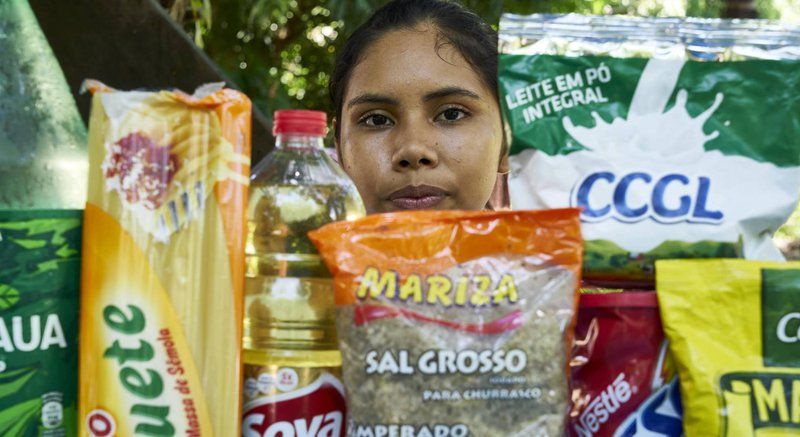Objectives:
Students will be able to:
- Determine the central ideas of a video about youth mobilization on plastic waste in the Amazon rainforest
- Analyze the causes of and make local connections to plastic pollution
- Use persuasive writing and visual arts skills to inspire change in their own communities
Warm-Up:
1. On your own or with a partner, take a look at the things in your desk.
- Where did they come from?
- Did they come in packaging? If so, what was the packaging made of?
- What happened to the packaging?
2. Take a moment to think about the waste that’s produced at your home or in your school.
- What do you do with your waste?
- Where does your waste go when you throw it in the trash or recycling bin?
3. This lesson will explore the ways in which young people who live along the Tapajós river address problems that come up when people get rid of their waste in the Brazilian Amazon.
- What images come to mind when you think of the Amazon rainforest?
- Where is it?
- Who lives there?
Introducing the Lesson
Joane is 20 years old and lives in Suruacá, located on the Tapajós river in Brazil. The short documentary film “Joane: Plastic is Killing Us in the Amazon” tells a story about her activism in response to plastic pollution in the river and forest near her home. The Tapajós, a tributary, is a part of the greater Amazon river system, the largest in the world by volume. In fact, more water flows through it than in the next 7 largest river systems combined. What’s more, 20 percent of the Earth’s fresh water flows through it to the Atlantic Ocean, allowing it to nourish the largest rainforest ecosystem in the world—the Amazon rainforest. This lesson plan explores Joane’s way of life and efforts to combat plastic pollution, and encourages students to reflect on similar issues in their communities and how they can make a difference.
Some useful vocabulary for this lesson:
Joane’s story is part of a Pulitzer Center-supported project on “Rainforest Defenders,” a video series documenting Indigenous youth who are defending the environment and their way of life in the Amazon. You can find more stories here.
Analyzing the Reporting
Watch the video, then respond to the comprehension and discussion questions.
Comprehension Questions
- What issue is Joane concerned about in her community?
- According to the video, what are the causes of that issue?
- What does Joane say is her motivation for fighting plastic pollution?
- What are some ways that she chooses to mobilize her community to address this issue?
Discussion Questions
- What images from the video stand out to you? Why?
- How does the reporter choose to end the video? What is the effect of ending the video with a scene of people putting out a plastic-burning fire in the forest?
- What obstacles do you think Joane faces in solving the plastic pollution problem?
- Of the ways she addresses this issue, which do you think will be the most effective? Why?
- Reflecting on the warm-up activity, compare and contrast the presence of plastic waste in your community with what you’ve learned about plastic waste in Joane’s.
- What actions can be taken to address plastic waste in your school or community?
Extension Activities
Option 1. Write a letter to your principal or to your representative summarizing the video and persuading them to help lower plastic waste at your school or in your community. Your letter should include…
- A detail from the video about why plastic waste is detrimental to the environment.
- An explanation of what actions can be taken to address plastic waste in your school or community. (Some examples of student work writing similar letters can be found here.)
Option 2. The video shows that youth can raise the profile of issues important to them using visual art. What is an environmental issue in your community that you would like to see solved? Like Joane, think of a way that visual tools (like her photo of the boat made of plastic) can be used to raise awareness about the issue. Compose a photo, create a poster, or draw a picture that will help solve the issue of your choice, and consider the following:
- What text or images will encourage the change you seek?
- Where can you put your finished artwork/how can you publicize it so that it will raise the most awareness?
Common Core Standards:
CCSS.ELA-LITERACY.RI.7.2
Determine two or more central ideas in a text and analyze their development over the course of the text; provide an objective summary of the text.
